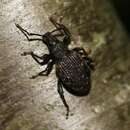Conservation Status
provided by University of Alberta Museums
Common in North America (Warner and Negley 1976), not of concern.
- license
- cc-by-nc
- copyright
- University of Alberta Museums
Cyclicity
provided by University of Alberta Museums
Usually overwinter as larvae, but adults may hibernate in warmer climates (Warner and Negley 1976).
- license
- cc-by-nc
- copyright
- University of Alberta Museums
Distribution
provided by University of Alberta Museums
This species occurs in Southern Alberta, British Columbia, Manitoba, New Brunswick, Newfoundland, Nova Scotia, Ontario, Prince Edward Island and Quebec (Proc. Entomol. Soc. Wash. 1999). It occurs in the western United States as far north as Alaska, and is very well spread out across the eastern United States (Warner and Negley 1976). It inhabits northern and mid Europe as far south as France and Italy, and is present in Australia, New Zealand, and Tasmania (Warner and Negley 1976).
- license
- cc-by-nc
- copyright
- University of Alberta Museums
General Description
provided by University of Alberta Museums
"Eggs are yellowish brown in color and larvae are creamy white with a brown head (Oregon State University Extention). The pupae are also creamy white, and reveal distinct adult parts with separate wing sacs along their backs that eventually fuse (Shearer). Adults are blackish, 9 to 11 mm long, have elbowed antennae slightly widened at the tip, have fused elytra and cannot fly. They have patches of golden scales on their elytra covered with yellow curled hairs (Warner and Negley 1976). The apex of their tibia is rounded, their femora are toothed, and their rostrum is long and widened at the tip (Warner and Negley 1976). Although the weevils are parthenogenetic and there are no males in North America, they do have a spermatheca (Cram 1958). Adults tend to aggregate in large groups due to pheromones and other attractants (Alford et al. 1996).
- license
- cc-by-nc
- copyright
- University of Alberta Museums
Habitat
provided by University of Alberta Museums
Larvae live underground among plant roots, and adults prefer dark quiet spaces (Warner and Negley 1976).
- license
- cc-by-nc
- copyright
- University of Alberta Museums
Life Cycle
provided by University of Alberta Museums
In the early summer, adults emerge from the soil, then must feed for approximately 4 weeks before they begin ovipositing (Oregon State University Extension). They oviposit their eggs in soil near plant roots and foliage, and oviposition ends by early September (Oregon State University Extension). Each adult may deposit more than 800 eggs in its lifetime, and its life expectancy can be 2 or more years (Alford et al. 1996). Larvae overwinter in the soil among plant roots, continue to develop in the spring when the soil warms up, then pupate in the late spring (Oregon State University Extension). Dispersal of this flightless weevil is dependent on the distances it walks and on shipments of horticultural products (Entomol. Soc. of Wash. 1999). It inhabits greenhouses, nurseries, vineyards, and other agricultural crops (Entomol. Soc. of Wash. 1999).
- license
- cc-by-nc
- copyright
- University of Alberta Museums
Trophic Strategy
provided by University of Alberta Museums
Larvae feed on roots, and adults feed nocturnally on the foliage of a wider range of host plants (Warner and Negley 1976). North American host plants include maple, maidenhair, bittersweet, clematis, dracaena, hawthorn, cyclamen, strawberry, juniper, privet, mint, four o'clock, tuberose, rhododendron, rose, raspberry, nightshade, potato, spirea, yew, arborvitae, blueberry, and the European host plants include grape (Warner and Negley 1976).
- license
- cc-by-nc
- copyright
- University of Alberta Museums

